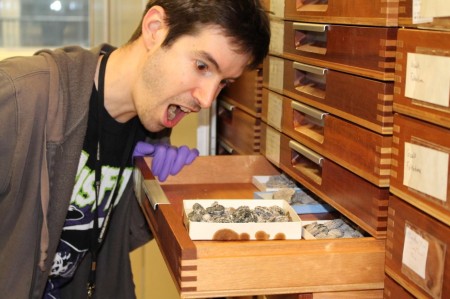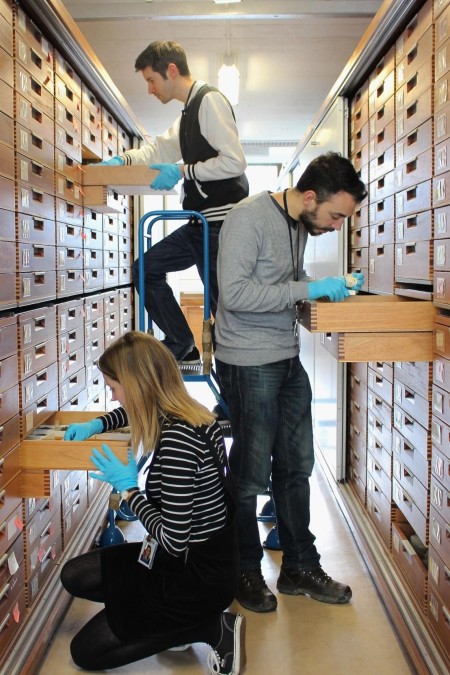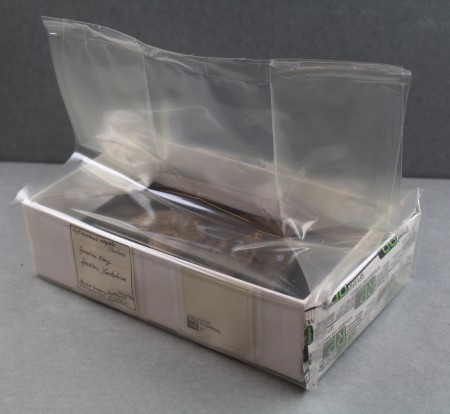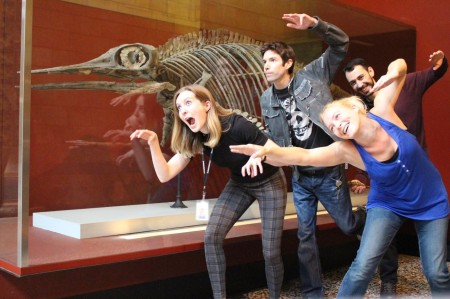‘Project Airless’ is a three year venture that began in August 2015 at the Natural History Museum (NHM) in London, with the objective of treating and preventing pyrite decay in the Museum’s historic earth sciences collections.
Pyrite Decay
Pyrite, or ‘fool’s gold’ (iron sulphide), is a common mineral of varying crystal structure (though cubic is common) that can often be found in or around fossils. It can occur in a compact, crystallized and stable form – or as a porous, microcrystalline and unstable form.
Pyrite oxidation, or ‘decay’, can occur when the mineral reacts with atmospheric oxygen in relative humidities (RH) above 60%. The resulting by-products of this oxidation depend on the mineral composition of the fossil and matrix, but often comprise sulphuric acid and hydrated ferrous sulphates, which can be very harmful to specimens, labels, and storage media. Once pyrite has begun to oxidise, mineral hydrates will form at as low as 30% RH. Signs that pyrite oxidation is occurring include expansion cracks, white or yellowish acicular crystal formations, and a sulphurous odour.

Distressing scenes for fossil enthusiasts
Method
Three conservation technicians have been surveying the collections and recording where pyrite decay is occurring amongst the NHM’s 7 million fossils and 500,000 mineralogical specimens.

Hunting high and low for signs of pyrite oxidation
Affected specimens are temporarily removed from the collection, photographed, and a condition report created for the specimen on the Museum’s collections database. Following this, any remedial treatments are undertaken as necessary (ammonia gas treatment, for example). The fossil is then placed in an acid-free tray within a Plastazote inlay for protection. To prevent further oxidation, the specimens are heat-sealed in a NeoEscal barrier film bag with oxygen scavenging sachets, forming an anoxic microenvironment. Once sealed, the technicians complete a process report and return the fossil to the collections. This work is being undertaken in advance of the development of a new Earth and Planetary Science building, which will have a more efficiently controlled environment.

Specimens re-housed in an anoxic microenvironment
Treatments
Once a specimen has been assessed for pyrite decay, there are some remedial treatments the conservation technicians can undertake, depending on the severity. The first of these is the removal of any white/yellowish crystals by dry brushing, followed by consolidating any cracks in both the fossil and the matrix with Paraloid B72 in Acetone.
If a figured or type specimen is exhibiting signs of severe pyrite oxidation, a cast can be made in order to preserve morphological detail before it deteriorates further. However, moulding and casting carry risks for fragile specimens.
Ammonia gas treatment is a method that successfully neutralizes sulphuric acid produced by pyrite oxidation, and involves exposing specimens to the vapour emitted by a mixture of ammonium hydroxide and PEG 400 (polyethylene glycol) within an enclosed polyethylene or glass container. The vapours from the ammonium hydroxide react with the decay products, turning the affected areas a brick-red colour.

Team Airless to the rescue!
The Future
According to current estimates, 14,000 specimens at the Museum are in urgent need of this protective measure. As the project progresses, the team hopes that they will be able to share knowledge and expertise with other museums and institutions that may be facing the same problems as the NHM. Images generated for each specimen during the project should vastly improve the Museum’s collection database – and may even limit the need to open the bags. While ensuring that these valuable specimens remain intact, and of use for years to come, the project is also increasing digital access and reducing unnecessary handling by using a web based application to associate images with each specimen’s unique barcode.


Reblogged this on ljanehenderson's Blog.
LikeLike
Pingback: Top Ten Most Read Blogs of 2016 | NatSCA